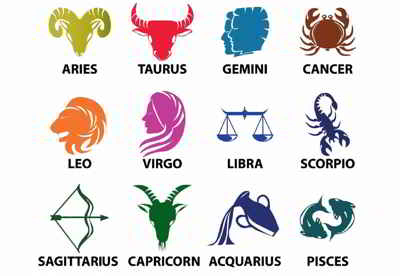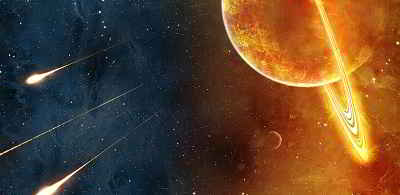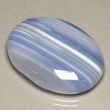Modern Birthstones
What are the birthstones for each month?

The most commonly used birthstone system (based on the birth month) has nothing to do with astrology and signs of the Zodiac. Numerous cultures
have traditionally associated gems with birth dates, and many people have, and still do, consider it good luck to display their birthstone. Since the
signs of the Zodiac change anywhere from the 19th to the 22nd of each month, a list of Zodiac birthstones cannot be based on the months of the calendar
year.
Tropical System of Astrology
According to the Tropical system of astrology prevalent in the West, zodiac or birth signs are determined by the position of the Sun in one's horoscope. In the Sidereal system this is determined by the position of the Moon. But in both systems, the zodiac sign is important, not the month of one's birth. Each sign of the zodiac (rasi) is ruled by one of the planets and each planet in turn rules over certain gemstones according to their color.
Modern verses Traditional Birthstones |
||
|---|---|---|
| Zodiac Sign Month w/ Date |
Modern Birthstones 20-21st Centuries |
Traditional Birthstones 18-19th Centuries |
| Capricorn January Dec. 22 - Jan. 19 |
Garnet | Garnet |
| Aquarius February Jan. 20 - Feb. 18 |
Amethyst |
Amethyst or Hyacinth |
| Pisces March Feb. 19 - Mar. 20 |
Aquamarine or Bloodstone |
Jasper or Bloodstone |
| Aries April Mar. 21 - Apr. 19 |
Diamond |
Diamond or Sapphire |
| Taurus May Apr. 20 - May 20 |
Emerald |
Emerald or Agate |
| Gemini June May 21 - Jun. 20 |
Pearl, Moonstone, or Alexandrite |
Pearl, Moonstone, or Alexandrite |
| Cancer July Jun. 21 - Jul. 22 |
Ruby |
Turquoise or Onyx |
| Leo August Jul. 23 - Aug. 22 |
Peridot or Sardonyx
|
Sardonyx |
| Virgo September Aug. 23 - Sep. 22 |
Sapphire | Peridot |
| Libra October Sep. 23 - Oct. 22 |
Opal or Tourmaline |
Beryl or Opal |
| Scorpio November Oct. 23 - Nov. 21 |
Topaz or Citrine |
Topaz or Pearl |
| Sagittarius December Nov. 22 - Dec. 21 |
Tanzanite, Turquoise, Zircon, Lapis Lazuli, or Blue Topaz |
Ruby |
Modern Birthstones by Month
JANUARY Birthstone
 Garnet:
Garnet is the birthstone for January, and is also the accepted anniversary gemstone for the 2nd year of marriage. The gemstone’s resemblance
to pomegranate seeds earned its name, from the Latin word for the crimson fruit, granatum. Its deep red color symbolizes passionate devotion, friendship,
vitality, and balance. Garnet, derived from the word granatum, means seed, and is called so because of the gemstone's resemblance to a pomegranate
seed. The gemstone dates back to 3100 BC, when the Egyptians used garnets as inlays jewelry. Legend holds that Noah hung a large garnet in the ark
for illumination. It reportedly also gives its wearer guidance in the night, protection from nightmares, and according to Egyptians, is an antidote
for snakebites and food poisoning. Garnets are durable and brilliant and the most popular color of a garnet is reddish-brown, it comes in other colors
such as purple, pink, violet, green, yellow, orange, red, brown, black, and even colorless.
Garnet:
Garnet is the birthstone for January, and is also the accepted anniversary gemstone for the 2nd year of marriage. The gemstone’s resemblance
to pomegranate seeds earned its name, from the Latin word for the crimson fruit, granatum. Its deep red color symbolizes passionate devotion, friendship,
vitality, and balance. Garnet, derived from the word granatum, means seed, and is called so because of the gemstone's resemblance to a pomegranate
seed. The gemstone dates back to 3100 BC, when the Egyptians used garnets as inlays jewelry. Legend holds that Noah hung a large garnet in the ark
for illumination. It reportedly also gives its wearer guidance in the night, protection from nightmares, and according to Egyptians, is an antidote
for snakebites and food poisoning. Garnets are durable and brilliant and the most popular color of a garnet is reddish-brown, it comes in other colors
such as purple, pink, violet, green, yellow, orange, red, brown, black, and even colorless.
FEBRUARY Birthstone
 Amethyst:
Amethyst:
Amethyst is the birthstone for February, and is also the accepted anniversary gemstone for the 6th year of marriage. Amethyst symbolizes sincerity
and security. It was believed by ancient Greeks and Romans to ward off intoxicating powers of Bacchus. It is said to have a sobering effect, keeping
the wearer clear-headed and quick witted as well as symbolizing peace, protection and tranquility; and some say it prevents baldness and improves complexion,
as well as protection from treason and deceit. Amethyst purple tones range from deep, dark violet, to the less coveted pale lavender. The gem’s
rich color is associated with royalty and nobility. Amethyst is said to have been Catherine the Great’s favorite gemstone and dark-hued stones
are found in today’s British Crown Jewels. It is important to keep amethysts away from the sun, as heat strips the gem of color and causes it
to turn yellow. Evidence points to the use of amethyst by Egyptian nobility beginning around 3,000 BC.
MARCH Birthstone
Two birthstones for March are aquamarine and bloodstone.
Aquamarine:
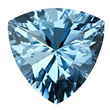 The name aquamarine was
derived by the Romans, "aqua,"meaning water, and "mare," meaning sea, because it looked like sea water. Aquamarines were believed
to have originated from the jewel caskets of sirens, washed ashore from the depths of the sea. They were considered sacred to Neptune, Roman god of
the sea. It is associated with the sea because of its distinctive blue-green hues, aquamarine symbolizes loyalty, honesty, and beauty,
and was believed to protect sailors as well as to guarantee a safe voyage. Its first documented use was by the Greeks between 480-300
BC. They wore aquamarine amulets engraved with Poseidon (the Greek god of the sea) on a chariot. Victorians gave this jewel to guarantee marital happiness
and devotion. It is also considered to be a universal symbol of youth, hope, and happiness. Aquamarine is a pastel stone that is greenish-blue in color.
The name is derived from Latin, meaning "sea"and "water."Hues range from a nearly colorless whitish-blue to a rich teal, but the
most valued color is a vivid blue aqua shade.
The name aquamarine was
derived by the Romans, "aqua,"meaning water, and "mare," meaning sea, because it looked like sea water. Aquamarines were believed
to have originated from the jewel caskets of sirens, washed ashore from the depths of the sea. They were considered sacred to Neptune, Roman god of
the sea. It is associated with the sea because of its distinctive blue-green hues, aquamarine symbolizes loyalty, honesty, and beauty,
and was believed to protect sailors as well as to guarantee a safe voyage. Its first documented use was by the Greeks between 480-300
BC. They wore aquamarine amulets engraved with Poseidon (the Greek god of the sea) on a chariot. Victorians gave this jewel to guarantee marital happiness
and devotion. It is also considered to be a universal symbol of youth, hope, and happiness. Aquamarine is a pastel stone that is greenish-blue in color.
The name is derived from Latin, meaning "sea"and "water."Hues range from a nearly colorless whitish-blue to a rich teal, but the
most valued color is a vivid blue aqua shade.
Bloodstone:
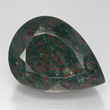 The second birthstone
for March is the bloodstone. Bloodstone - also known as heliotrope is a form of the abundant mineral quartz. This particular form of quartz, known
as cryptocrystalline quartz, exists as a mass of tiny quartz crystals formed together in large lumps that show no external crystal form, yet each of
the component crystals that make up the mass is a genuine crystal. This quartz variety is also called chalcedony. Green chalcedony spotted with flecks
of red is known as bloodstone. An opaque quartz with red flecks, this ancient stone is believed to have healing powers, especially for blood
disorders. It is sometimes called the Martyr’s Stone as legend tells that it was created when drops of Christ’s blood stained some jasper
at the foot of the cross.
The second birthstone
for March is the bloodstone. Bloodstone - also known as heliotrope is a form of the abundant mineral quartz. This particular form of quartz, known
as cryptocrystalline quartz, exists as a mass of tiny quartz crystals formed together in large lumps that show no external crystal form, yet each of
the component crystals that make up the mass is a genuine crystal. This quartz variety is also called chalcedony. Green chalcedony spotted with flecks
of red is known as bloodstone. An opaque quartz with red flecks, this ancient stone is believed to have healing powers, especially for blood
disorders. It is sometimes called the Martyr’s Stone as legend tells that it was created when drops of Christ’s blood stained some jasper
at the foot of the cross.
APRIL Birthstone
 Diamond:
Diamond:
Diamond is the birthstone for April. A diamond is a mineral compound made of pure carbon and is the hardest natural substance on the planet. Diamonds
are named after the Greek term for unconquerable; diamonds represent unequalled strength and determination. Diamonds also represent eternity and undying
love, and are also universally identified as the gemstone for engagement rings. Diamonds are typically colorless, but yellow, brown, green, gray, black,
pink, blue, red, and purple stones can also be found along the diamond color spectrum. Jewelry-grade diamonds are rated based on color from bluish-white
to yellow, and on clarity, which ranges from pure to various levels of flawed
MAY Birthstone
 Emerald:
Emerald:
Emerald the birthstone of May, is the most highly prized of all gems. The emerald’s name is indirectly derived from the Greek word "smaragdos,"a
term applied to several kinds of green stones. The history of emeralds can be traced back to antiquity. They were worn by royalty in Babylon and Egypt.
Tools dating back to 1300 BC, during the reign of Rameses II, have been found in emerald mines in Egypt. Queen Cleopatra’s emeralds were believed
to originate from mines in Southern Egypt, near the Red Sea. The Aztecs and Incas also coveted emeralds, and the Moguls of India revered them so much
they inscribed the gems with sacred text to be used to ward off evil. With its vibrant green hue, emerald is the symbol of rebirth, immortal love,
wisdom and future success. It is said that emerald will bring good fortune and youth. According to legend, wearing emeralds cures a wide variety of
ailments, including low IQ, poor eyesight, and infertility, but also allows the wearer to predict the future.
JUNE Birthstone
June counts three gems as birthstones; pearl, alexandrite, and moonstone.
 Pearl:
Pearl:
Historically used an adornment for centuries, the pearl has been recognized as the emblem of modesty, chastity, and purity. The pearl is also associated
with the wedding month of June and symbolizes a happy marriage. Unlike most other gemstones, pearls are not mined. The most highly valued pearls are
created inside of saltwater oysters and freshwater clams whose shells are lined with mother-of-pearl, or nacre. Pearls from other mollusks lack the
desired luster and are considered to be of less value. When a foreign particle enters the mollusk’s mantle, shell-secreting cells attach themselves
to the particle and form a protective barrier. The process of "pearling"began before 1,000 BC in China and continues today in many freshwater
and saltwater areas of the world.
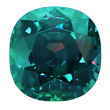 Alexandrite:
Alexandrite:
A relatively modern gem, Alexandrite, was first discovered in Russia in 1831 during the reign of its namesake, Czar Alexander II, and is an
extremely rare chrysoberyl with chameleon-like qualities. Its color is a lovely green in both daylight and fluorescent light; it changes color to a
purplish red in incandescent light. Due to its rarity, some jewelers stock synthetic versions of this enchanting gemstone. (Synthetic gemstones are
man-made alternatives to the natural material, possessing the same physical, optical, and chemical properties as the natural gemstone.) -
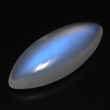 Moonstone:
Moonstone:
The third birthstone for June is the Moonstone. It was given its name by the Roman natural historian Pliny, who wrote that moonstone's appearance
altered with the phases of the moon - a belief that held until well after the sixteenth century. A phenomenal gemstone, moonstones show a floating
play of light (called adularescence) and sometimes show either a multirayed star or a cat's eye. Considered a sacred stone in India, moonstones
often are displayed on a background of yellow (a sacred color) and are believed to encapsulate within the stone a spirit whose purpose is to bring
good fortune. Part of the family of minerals called feldspar, moonstone occurs in many igneous and metamorphic rocks and comes in a variety
of colors such as green, blue, peach, and champagne.
JULY Birthstone
 Ruby:
Ruby:
Ruby is the birthstone for July and has long been considered a powerful gemstone. Legend says rubies will protect their owners from all sorts
of danger and misfortune. Arousing the senses and stirring the imagination, rubies are said to guarantee health, wisdom, wealth, and love. During the
Middle Ages, the ruby was believed to have an inner fire that could not be concealed.By the time of the Renaissance, only the wealthiest individuals
could dream of owning a ruby. Ruby was said to be the most precious of the twelve stones God created when he created all things and a Ruby was placed
on Aaron's neck by God's command. In the ancient language of Sanskrit, Ruby is called Ratnaraj, or king of precious stones.Rubies were also highly
prized by ancient Chinese warriors who were known to wear rubies on their armor. Rubies have been highly prized gemstones throughout history.
AUGUST Birthstone
Two birthstones are available for August birthdays: Peridot and Sardonyx.
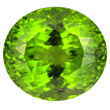 Peridot:
Peridot:
Peridot, the birthstone for August, is said to host magical powers and healing properties to protect against nightmares and to bring the wearer
power, influence, and a wonderful year. Peridot is the product of volcanic action and is a lively lime green color.The peridot is one of the few gemstones
to occur in one color, naturally - olive green. The intensity of the color depends on the amount of iron in the crystal formation. The name of the
gem is Old French in origin, and is said to have been first mentioned in the will of a bishop. He bequeathed three rings to the St. Albans Abbey, one
being peridot. Peridot is very often confused with the emerald, and is sometimes called "the evening emerald."It is said to symbolize strength,
and if set in gold, will protect the wearer from evil dreams.
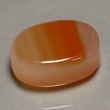 Sardonyx:
Sardonyx:
Sardonyx is a form of onyx and is recognized by its layers of reddish brown and white banding. It was popular with the ancient Greeks and
Romans who carried into battle talismans of sardonyx engraved with images of heroes such as Mars or Hercules, believing that this would bring courage
and victory. Because of its attractive banding, sardonyx has long been used to fashion cameos (carved raised figures) and intaglios (the reverse of
cameos).
SEPTEMBER Birthstone
 Sapphire:
Sapphire:
Sapphire, the September birthstone, has been popular since the Middle Ages, and according to folklore, will protect your loved ones from envy
and harm. Medieval clergy wore sapphires to symbolize heaven, while commoners thought the gem attracted heavenly blessings. Sapphires are the second
hardest gemstone, after diamonds, representing the indestructibility of love. Sapphires come in a variety of colors, but are mostly associated with
blue hues. A sapphire of another color, like pink, white or yellow, is generally called a fancy sapphire. The blue sapphire represents peace and serenity.
It is seen many times in ancient religious writing to symbolize purity, wisdom, loyalty and faith. The sapphire is a precious gemstone, along with
diamonds, emeralds, and rubies.
OCTOBER Birthstone
October is another month with two birthstone choices - Tourmaline and Opal.
 Opal:
Opal:
The name "opal" can mean "to see a change in color"and is derived from the Latin Opalus, or stone. The birthstone for October is
opal, meaning "precious stone" in Sanskirt, and they can range in color from milky white to black with flashes of yellow, orange, green,
red, and blue. Given opals fiery flashes of color; it was believed that lightning brought the gem to Earth. Opal has symbolized hope, innocence, and
purity through the ages. Protection from disease was its main virtue, while also allowing the wearer to see the future.
 Tourmaline:
Tourmaline:
Tourmaline has become a favorite gemstone among jewelry designer, and gem collectors the world over. Since it is available in a wide variety
of colors, it is ideally suited to almost anyone's taste. Tourmaline also is known for displaying several colors in the same gemstone. These bi-color
or tri-color gems are formed in many combinations; gemstones with clear color distinctions are highly prized. One multi-color variety is known as watermelon
tourmaline, and features green, pink, and white colors bands; to resemble its namesake, the gemstone is cut into thin slices having a pink center,
white ring, and green edge.
NOVEMBER Birthstone
Two gems are appropriate for November birthdays - Topaz and Citrine
 Topaz:
Topaz:
Topaz, the birthstone for November and the -4th Anniversary Gem, has been prized for several thousands of years in antiquity. Topaz can come
in a variety of colors, but the prized Imperial Topaz, adored by Russian Czars, is orange with pink undertones. Named for an island, Topazos, in the
Red Sea where the Romans found the gem, it has come to symbolize consistency, faithfulness and friendship and is believed to have calming and curative
powers. It is also said to prove loyalty in friends and associates by changing colors in the presence of poison. During the Middle Ages, topaz was
used to cure mental illness and was thought to delay death.
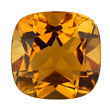 Citrine:
Citrine:
Citrine, the other birthstone for November is known as the "healing quartz". This golden gemstone is said to support vitality and
health while encouraging and guiding hope, energy and warmth within the wearer. Citrine can be found in a variety of shades ranging from pastel yellow
to dark brownish orange. It is one of the most affordable of gemstones and plentiful in nature.
DECEMBER Birthstone
The five birthstones associated with December are Turquoise, Zircon, Tanzanite, Blue Topaz, and Lapis Lazuli.
 Zircon:
Zircon:
Zircon is the traditional birthstone for the last month of the year. Found in a wide selection of colors, folk wisdom grants zircon the power
to relieve pain, whet the appetite, protect travelers from disease and injury, ensure a warm welcome, and prevent nightmares. The gem was used in Greece
and Italy as far back as 6th Century A.D. Zircons were being marketed as diamonds in the 14th century, after faceting began. Early mines were in France
and Sri Lanka . The name appears to come from the Persian word "zargun,"which means gold-colored, though brownish-gold is only one version
of the zircon. In the symbolic Kalpa Tree of the Hindu religion, green zircon represents the tree’s foliage.
Tanzanite:
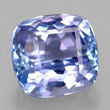 Discovered in the late 1960s in
Tanzania, and found exclusively in this tiny area of the world, tanzanite exhibits a rich violet-blue color for which the gemstone is treasured;
often it is heat-treated to achieve this color. Colors range from blue to purple, and tanzanites that are medium dark in tone, vivid in saturation,
and slightly violet blue command premium prices. As tanzanite can be less expensive than sapphire, it often was purchased as an alternative. However,
it has increased in popularity and now is valued more for its own beauty and brilliance than as a sapphire substitute
Discovered in the late 1960s in
Tanzania, and found exclusively in this tiny area of the world, tanzanite exhibits a rich violet-blue color for which the gemstone is treasured;
often it is heat-treated to achieve this color. Colors range from blue to purple, and tanzanites that are medium dark in tone, vivid in saturation,
and slightly violet blue command premium prices. As tanzanite can be less expensive than sapphire, it often was purchased as an alternative. However,
it has increased in popularity and now is valued more for its own beauty and brilliance than as a sapphire substitute
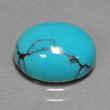 Turquoise:
Turquoise:
The name turquoise, from the French expression Pierre tourques or Turkish stone, originated in the thirteenth century and describes one of
the oldest known gemstones. Its name is believed to originate from the French phrase "pierre turquoise"meaning "Turkish stone"
because turquoise was brought to Europe by Venetian merchants who first acquired it in Turkish bazaars. Turquoise varies in color from greenish blue,
through robin's egg-blue, to sky blue shades and its transparency ranges from translucent to opaque. Turquoise is plentiful and is available in a wide
range of sizes. It is most often used for beads, cabochons, carvings, and inlays. Although its popularity fluctuates in fashion, it is a perennial
favorite in the American Southwest.
Blue Topaz:
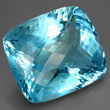 The icy hue of the blue topaz
is perfect for being the birthstone of December. Ancient civilizations believed this stone had cooling properties, not only on a pot of water, but
on hot tempers, as well! Ironically, the intensity of the blue to the stone is due to either naturally occurring or engineered heat. Gifting this stone
to a person is a sign of love and fidelity. The wearer of blue topaz may experience an increased confidence in their ability to communicate.
The icy hue of the blue topaz
is perfect for being the birthstone of December. Ancient civilizations believed this stone had cooling properties, not only on a pot of water, but
on hot tempers, as well! Ironically, the intensity of the blue to the stone is due to either naturally occurring or engineered heat. Gifting this stone
to a person is a sign of love and fidelity. The wearer of blue topaz may experience an increased confidence in their ability to communicate.
Lapis Lazuli:
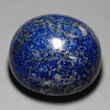 Lapis lazuli is the traditional
birthstone for December and the accepted gem for the seventh and ninth wedding anniversary. It is the Planetary stone for Capricorn and the Zodiac
stone for Libra. Top quality lapis lazuli comes from Afghanistan where it has been mined for centuries. It is also found in Siberia, Chile, the U.S.,
Pakistan, and Canada. The name is derived from the Latin 'lapis' which means stone, and from the Persian word 'lazhward' which means blue rock.
Lapis lazuli is the traditional
birthstone for December and the accepted gem for the seventh and ninth wedding anniversary. It is the Planetary stone for Capricorn and the Zodiac
stone for Libra. Top quality lapis lazuli comes from Afghanistan where it has been mined for centuries. It is also found in Siberia, Chile, the U.S.,
Pakistan, and Canada. The name is derived from the Latin 'lapis' which means stone, and from the Persian word 'lazhward' which means blue rock.
Traditional Birthstones not listed above in Modern Birthstones
 Hyacinth:
Hyacinth:
Hyacinth was also a traditional birthstone for February from as early as the 15th century. This February birthstone is the red variety of
zircon, though the gemstone may have shades of yellow. Hyacinth is also the birthstone for January in the ancient Italian and Russian calendar. A confusion
between which month hyacinth should be assigned as birthstone is possible, with January having a stronger claim for red zircon, red being the main
birthstone color of January. Zircon is believed to enhance prosperity, as well as bring peace of mind.
 Jasper:
Jasper:
Jasper is a traditional birthstone for March. Jasper was also the March birthstone in the ancient Russian, Italian and Hebrew calendar. Before
the gemstone became the birthstone of March in these ancient calendars, jasper was the planetary stone for Aries, which falls partly on the month of
March. This March gemstone is an opaque variety of chalcedony commonly occurring in red, and usually composes the red inclusions found in the main
traditional March stone, bloodstone. Jasper is believed to balance positive and negative energy, thereby helping to stabilize one’s personality.
Agate
Agate is traditional birthstone for May. Agate is a microcrystalline variety of silica, chiefly chalcedony, characterised by its fineness of grain
and brightness of color. Although agates may be found in various kinds of rock, they are classically associated with volcanic rocks and can be common
in certain metamorphic rocks. his word is from the Greek name of a stone found in the river Achates in Sicily. This mineral is an impure form of quartz
consisting of banded chalcedony and used as a gemstone. It is an un-crystallized variety of quartz, presenting various tints in the same specimen.
Its colors are delicately arranged in stripes or bands or blended in clouds.
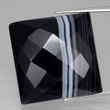 Onyx:
Onyx:
Onyx is a traditional birthstone for July, and is the ancient July birthstone going back to the old Roman, Italian and Hebrew calendar. Before
the gemstone materialized in these ancient calendars as the birthstone of July, onyx was the main zodiac stone for Leo, which falls partly on the month
of July. This July gemstone is banded agate of black and white, but is most popularly known as the black variety of chalcedony. The July stone is a
grounding stone believed to absorb negative energy.
 Beryl:
Beryl:
The name beryl is of the Ancient Greek "beryllos" which was originally applied to all green gemstones, but later used only
for beryl. Beryls are hard minerals consisting of beryllium aluminum silicate.The most famous variety of beryl is emerald. Beryls are popular gemstones,
and not only because of their gorgeous colours, they also convince because of their high brilliance and their excellent hardness. Beryls are some of
the most valuable of all the colored gemstones. Beryl increases psychic awareness and heightens human potential by expanding the mind to grasp
the laws of nature. Beryl is believed to bring good luck and give eternal youthfullness . It is said to protect travelers from danger and to treat
disorders of the heart and spine. It stimulates the mind, increases confidence and cleanses. It has been used in the treatment of disorders of the
heart, liver and spine and can also be helpful in treating concussions and damage to the cranial portion of the head. Legend: Beryl spheres or eggs
were used for scrying during the renaissance.The ancients used beryl in rain-making rituals. In the early 1200s, beryl was thought to help in courtroom
litigation as well as on the battle field. There is a "gem city" in greek myth, called the city of the islands of the blessed where beryl
formed the temples of the gods.
